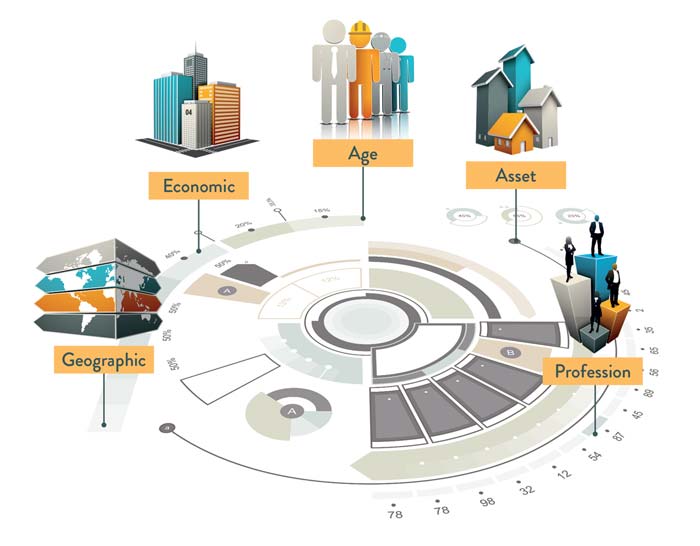



Entry of ‘demographics’
The next technical development was more on the level of information. This was the first attempt at targeted marketing, along with the use of a new word, ‘demographics’.
The rise of demographic marketing meant the end of the idea of ‘one message for everybody’. Instead marketing dollars could be spent more efficiently by breaking the market down into smaller divisions or ‘segments’ in classic marketing-speak. Popular examples are:

As marketing developed to increase segmentation, the profitability of companies increased too. In short, less money was being wasted on trying to sell something to people who either weren’t in a position to afford a product or who were never going to buy it anyway.
A great example was the analysis of which segment was buying the VW Beetle in the US, in the 1950s. Ford at that time was suffering from the common mental block of thinking that only one kind of product was what the market wanted – namely ‘show-off’, ostentatious cars; this went with another common mental block of thinking that they knew the answer when they didn’t.
But after a small investment of some market research, which was really nothing more stunning than asking VW Beetle drivers what they did for a living, Ford realised that these small, reliable little cars weren’t being bought by low-income workers who could afford nothing else, but by rather by middle-class professionals such as doctors, dentists and university professors.
After that, the next step was very straightforward: for Ford to produce a ‘VW Beetle’ kind of car, with the same basic functional factors that such a demographic segment liked, only with the added comfort factor of being available at the local Ford dealership.
The result in 1960 was the Ford Falcon – a car that was one of the most outstanding successes of the US motor industry, not to mention a remarkably profitable return on investment for a tiny amount of market research dollars. The Falcon continued in production in the US until 1970, and by Ford Argentina until 1991, with total unit sales of 466,796.